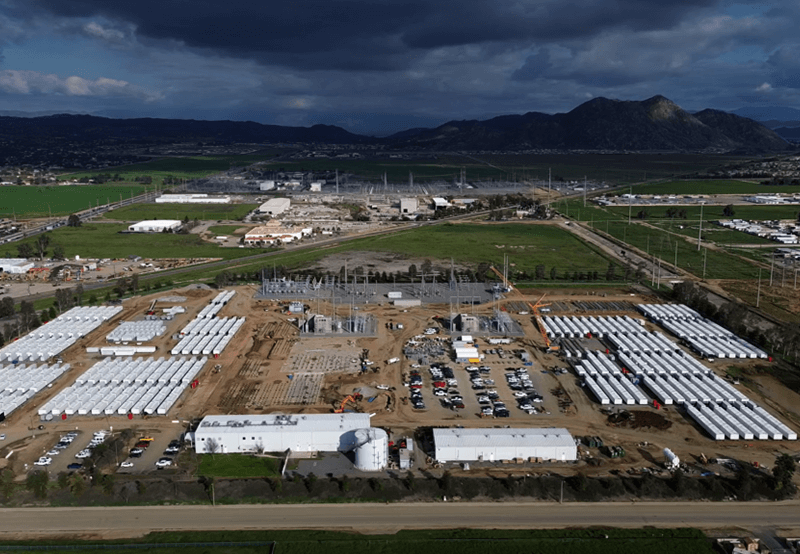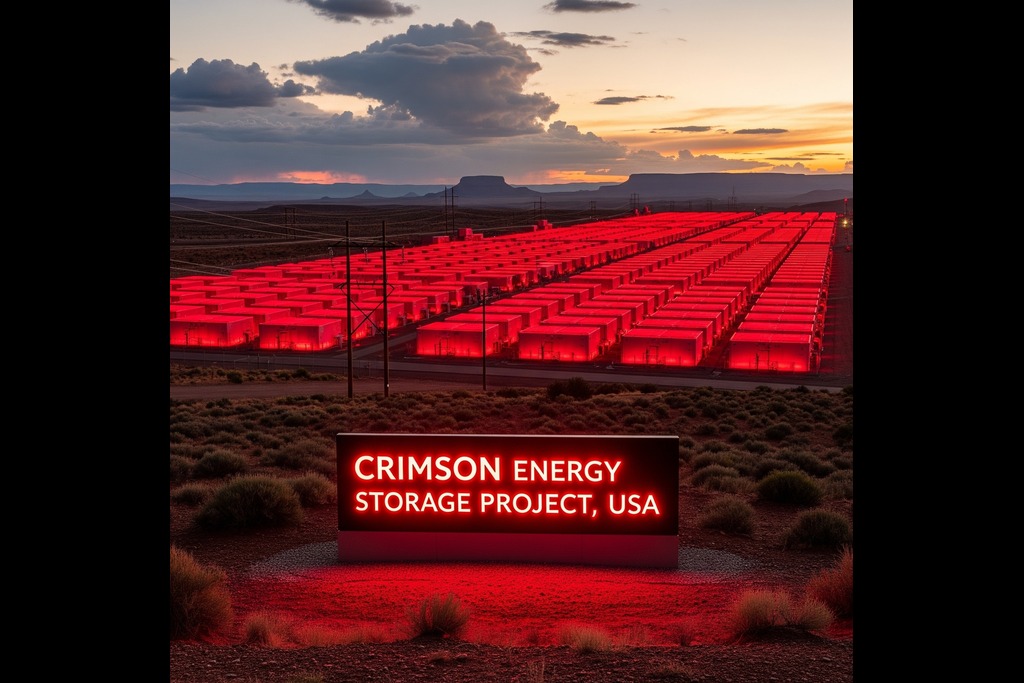Largest BESS Projects in the World 2025: Powering the Future with Grid-Scale Battery Storage
As the global energy transition accelerates, battery storage solutions have become essential for a sustainable future. Grid scale battery storage is revolutionizing energy distribution, ensuring stability and resilience for renewable power. In 2025, Battery Energy Storage Systems (BESS) are not only supporting clean energy—they’re redefining how power is stored and delivered worldwide. From California to China, the largest battery storage in the world showcases groundbreaking technology and capacity, setting new benchmarks for energy innovation. This blog highlights top BESS projects of 2025 and their critical role in driving a cleaner, more resilient global energy ecosystem through advanced battery storage solutions.

Why Battery Storage Matters More Than Ever
Before addressing the mega-projects, let it be known why battery energy storage systems (BESS) are significant:
- Balancing Supply and Demand: With intermittent resources such as solar and wind power, batteries balance power grids by storing surplus energy for use during low generation.
- Energy Resilience: In cases of extreme weather or grid outages, BESS can supply backup power to critical facilities.
- Decarbonizing the Grid: Batteries enable retirement of fossil fuel-based peaker plants by substituting them with clean, dispatchable energy.
Largest Battery Storage In The World As Of 2025.
1. Crimson Energy Storage Project, USA – 1,400 MWh
Located in California’s Riverside County, the Crimson Energy Storage Project is among the largest grid scale battery storage systems globally. Commissioned by Axium Infrastructure and managed by Recurrent Energy, this project is capable of storing 1,400 megawatt-hours (MWh) of electricity.
- Region: United States (California)
- Developer: Canadian Solar’s Recurrent Energy
- Status: Operational
- Capacity: 350 MW / 1,400 MWh
This project supports California’s ambitious clean energy goals and plays a key role in reducing reliance on gas-fired peaker plants.
2. Kapolei Energy Storage, Hawaii – 540 MWh
While Hawaii may be small in size, it’s a leader in clean energy innovation. The Kapolei Energy Storage (KES) project, developed by Plus Power, is a battery storage solution that aims to stabilize Oahu’s electric grid after the retirement of the AES coal plant.
- Region: United States (Hawaii)
- Developer: Plus Power
- Status: Operational
- Capacity: 185 MW / 540 MWh
KES also acts as a “virtual synchronous generator,” providing grid-forming capabilities for frequency and voltage regulation.
3. Futtsu BESS Project, Japan – 720 MWh (Under Construction)
Japan, facing both natural disaster risks and energy security concerns, is investing heavily in energy resilience. The Futtsu BESS Project, led by Tokyo Electric Power Company (TEPCO), will be one of Asia’s largest once completed.
- Region: Japan
- Developer: TEPCO Renewable Power
- Status: Under Construction (2025 completion)
- Capacity: 240 MW / 720 MWh
This BESS will support Japan’s plan to reduce carbon emissions and maintain grid stability amidst rising renewable energy adoption.
4. Chaozhou Battery Energy Storage Plant, China – 2,000 MWh
In 2025, China leads in deploying BESS technologies. One standout is the Chaozhou Battery Energy Storage Plant, with a whopping 2,000 MWh of capacity.
- Region: China (Guangdong Province)
- Developer: China Southern Power Grid
- Status: Operational
- Capacity: 500 MW / 2,000 MWh
This mega project supports solar and wind farms, showcasing China’s dominance in battery manufacturing and grid scale battery storage.
5. Victoria Big Battery, Australia – 450 MWh
Australia is another hotspot for renewable innovation. The Victoria Big Battery (VBB), developed by Neoen and powered by Tesla Megapacks, supports the Victorian grid and enables better utilization of interconnectors.
- Region: Australia (Victoria)
- Developer: Neoen
- Status: Operational
- Capacity: 300 MW / 450 MWh
VBB prevents blackouts and enhances energy resilience, providing quick-start capacity during grid stress events.
What Do These Projects Mean for the Global Energy Transition?
These mega-BESS projects are not just technological breakthroughs—they are pivotal to the global energy transition. By leveraging advanced battery storage solutions, they enable:
1. Decentralization of Energy: Shifting from fossil-fuel plants to renewable grids supported by battery storage solutions.
2. Accelerating Renewable Energy Adoption: Facilitating solar and wind integration without intermittency risks.
3. Enhancing Energy Resilience: Ensuring uninterrupted power for critical systems during disasters or cyberattacks.
4. Lowering Energy Costs: Reducing reliance on costly imports through peak shaving and time-shifting.
What Technologies Power the Largest BESS Projects?
Lithium-Ion Batteries: Still the dominant chemistry in 2025, lithium-ion offers high energy density and rapid deployment. Most of the largest systems use Tesla Megapacks or similar Li-ion configurations.
Flow Batteries: An emerging solution for long-duration storage, flow batteries like the vanadium-based systems in China offer a safer and more scalable alternative.
Hybrid Systems: Some BESS projects combine battery storage with hydrogen fuel cells or pumped hydro to provide multiple forms of energy flexibility.
Challenges Facing Grid Scale Battery Storage
Although battery storage is expanding fast, some central challenges remain:
- Safety risks: A battery may have had its components damaged by burning due to thermal runaway, combustion, and leaks of the chemicals in its construction, demanding high-level battery management systems and serious safety measures.
- Supply chain bottlenecks: Lithium, cobalt and rare earth metals are in acute demand which stresses capacity.
- Recycling and Disposal: At the end of the life battery there is no strong infrastructure and regulation.
To make the deployment of large-scale battery storage sustainable, safe, and efficient, it is important to address these hurdles the world over.
What’s Next for BESS in 2025 and Beyond?
There is a bright future. The following are the trends that will take place:
- Community Storage Projects: The concept of decentralized BESS will be adopted at the home and community level.
- AI-Driven Energy Management: Artificial intelligence software will determine how and when to charge/discharge batteries in an optimal manner.
- Regulatory Support: Governments across the world are introducing the use of incentives, subsidies, and schemes to encourage the deployment of BESS.
Conclusion
The largest battery storage in the world as of 2025 is helping redefine the future of energy. These battery storage solutions are at the heart of the global energy transition, enabling a cleaner, more reliable, and resilient power grid. Whether it’s Australia’s Waratah Super Battery or California’s Moss Landing, grid scale battery storage is no longer a futuristic concept—it’s the present reality, accelerating us toward a sustainable tomorrow.
As energy demand continues to rise and climate change accelerates, the importance of energy resilience through cutting-edge BESS projects will only grow. And the race to build bigger, smarter, and more efficient battery systems is just beginning.
Frequently Asked Questions (FAQs)
As of 2025, the Moss Landing Energy Storage Facility in California holds the title for the largest battery storage in the world with a capacity of 3,000 MWh. However, Australia’s Waratah Super Battery, expected to be completed later this year, will surpass many existing systems with 1,680 MWh of grid-connected storage.
Battery storage solutions help stabilize the power grid, reduce energy costs, and enhance energy resilience. They are vital for storing excess renewable energy like solar and wind and making it available when needed, supporting the global energy transition away from fossil fuels.
Grid scale battery storage refers to large battery systems connected directly to power grids. These systems store electricity during periods of low demand or high renewable output and discharge it during peak demand to maintain grid stability.
In 2025, the United States, China, and Australia are leading the way in deploying massive BESS projects. These nations are investing heavily in grid scale battery storage to meet renewable energy targets and strengthen energy resilience.
Most large-scale systems use lithium-ion batteries due to their high energy density and efficiency. However, alternative technologies like vanadium redox flow batteries are also being explored for their long-duration capabilities and scalability.












